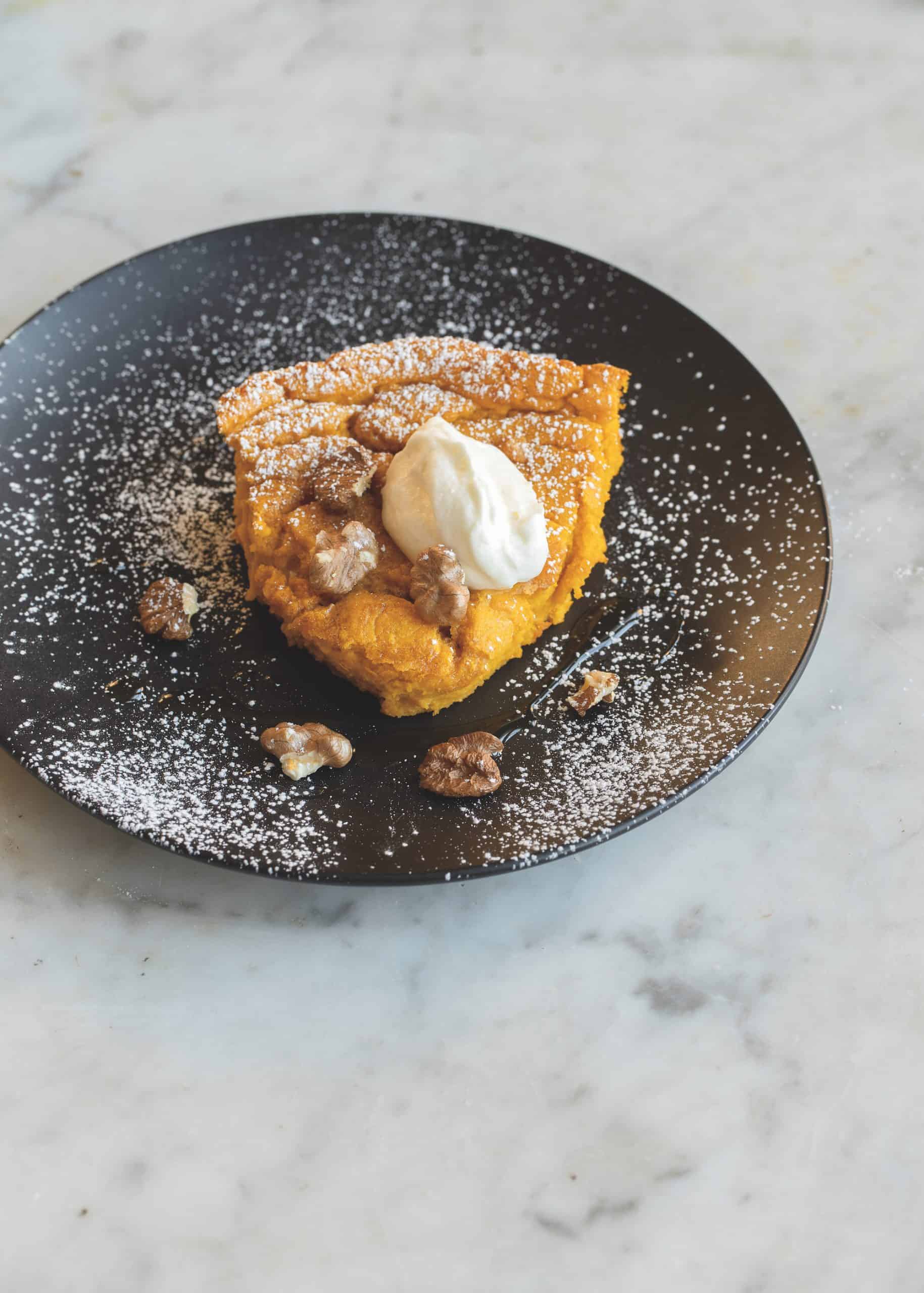
Photo: Alan Bergo
A popular dish throughout the American South, spoonbread is generally made with cornmeal, milk, butter, and eggs, then baked in the oven like a pudding. With similarities to cornbread (yet far softer), the name is derived from spoonbread typically being scooped from its baking vessel using a big spoon. The dish can also be flavoured further with a great number of ingredients, such as cheese or vegetables.
Adapted from The Forager Chef’s Book of Flora, a new book from forager and chef Alan Bergo, this squash spoonbread recipe champions kabocha, although other starchy squashes can be used, such as acorn or butternut. It’s also accompanied by a ‘road map’ for root-to-flower cooking found throughout the book, with Alan Bergo showcasing wild greens alongside familiar vegetables, specifically using parts of the entire plant, which are so often wasted.
“As a society we’ve forgotten this type of old-school knowledge, including many brilliant culinary techniques that were born of thrift and necessity,” writes Alan Bergo. “For our own sake, and that of our planet, it’s time we remembered.”
On his squash spoonbread recipe, Alan Bergo says: “This rich side dish made from squash lies in the realm of a soufflé, but is less fussy. It’s very versatile; I used to serve it for breakfast, brunch, lunch, or dinner, or spooned individually into ramekins as the base of a vegetarian entrée, depending on what part of my menu needed attention. Consider garnishing with things like maple syrup, toasted nuts, or fried sage, depending on when you’d like to serve it.”
The following recipe is from Alan Bergo’s new book The Forager Chef’s Book of Flora: Recipes and Techniques for Edible Plants from Garden, Field, and Forest (Chelsea Green Publishing, September 2021) and is reprinted with permission from the publisher.
Related: How To Make: Pumpkin & Crab Risotto